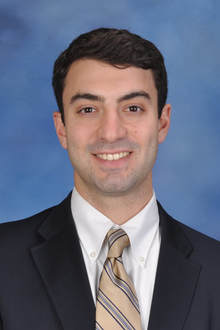 Zachary M. Ballin, Esq.
Zachary M. Ballin, Esq. - $900,000 for officer injured at poorly planned road paving detail
- $400,000 for officer struck by heavy machinery at utility detail
- $325,000 for officer injured by negligent heroin addict during overdose rescue
 Zachary M. Ballin, Esq. Zachary M. Ballin, Esq. Congratulations to Attorney Zachary M. Ballin for being named a Super Lawyer’s Rising Star for 2018. This is his second year in a row named to the list. It is an honor to be named among the Rising Stars, which includes no more than 2.5% of the state’s attorneys. Here are some of Attorney Ballin’s recent results:
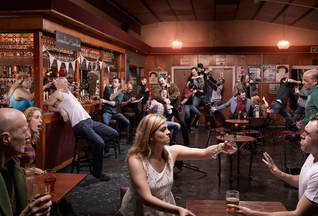 Judge agrees: the bar can be on the hook. Judge agrees: the bar can be on the hook. In some cases we handle, seemingly clear instances of negligence escalate into complex legal battles as defendants and insurers look for any way to avoid compensating an injured police officer. The case of Jessica Rondinelli vs. Emma Wiley and JMRS Restaurant, Inc., Essex Superior Court Civil Action No. 2016CV01298 was no different. On a Saturday night one recent summer, a nineteen-year-old girl walked into a Salem bar owned by JMRS Restaurant, where the underage girl was a regular. She ordered three Long Island iced teas, shots of tequila, and two sangrias. Under cross examination the bar’s manager admitted this was the equivalent of serving her three-quarters of a liquor bottle. We also discovered the bar admitted at least nine other underage kids that night. As closing time approached, the intoxicated girl repeatedly pushed and argued with another underage kid over the course of five minutes before smacking him, smashing a glass on the floor, and storming out of the bar. On her way out, she pushed a second underage kid. Once outside, she fought with two more underage customers from the bar, which finally called the police to stop the disturbance. Salem officers arrived while the bar ejected its customers onto the street who formed an eager crowd. As police gained control of the intoxicated girl, the crowd cajoled her to resist. While cuffed and seated in the cruiser she lunged and bit into the officer’s ear, growled, and shook her head. The officer pried the girl off, but a piece of the officer’s ear was lost. We filed suit on behalf of the injured officer against the girl and the bar which got her intoxicated. The bar tried to get the case thrown out of court on a motion for summary judgment. The bar argued there was no need for a trial. The bar urged the Court to conclude as a matter of law it is only responsible for harm caused by an overserved customer to the general public, arguing responding officers are excluded from that group. Further, the bar stated that since it is supposed to call the police to respond to such an event, it should not be held liable for injury to an officer during that response. We argued when the bar chose to overserve a patron to the point a disturbance was created, then it was responsible to anyone, including police, who respond to stop the disturbance and save others from getting hurt. The Court agreed that Massachusetts statutes and case law confirm a person or business who create a dangerous situation can be liable for injuries to responding police officers who are there to rescue people from a dangerous situation which the person or business created. The judge ruled in our favor upholding the officer’s right to make a claim against the bar for her injuries. Massachusetts statutes and case law interpreting them make clear that Massachusetts officers do not lose rights to pursue compensation for their injuries by putting on a badge. Officers and emergency responders are empowered to make claims against responsible third parties by our legislature when they are injured on the job. This law applies equally in Massachusetts to professional rescuers like police officers and firefighters who are hurt helping end dangerous situations people and businesses create. When a bar chooses to break the law over-serving a teenager who then injures a responding cop instead of a customer, there is no free pass just because the bar calls the police to stop the disturbance. As for the bar’s claim that the injury to the police officer by the biting teenager was not foreseeable, the Court agreed with us. The Court stated “…that the risk of an intoxicated patron injuring another, or a rescuer, in a fight, is foreseeable as drunken brawls are anything but uncommon”. Winning this legal battle was one major component that lead to a significant settlement for the injured officer who is grateful to have this case successfully resolved. - Zachary M. Ballin, Esq. 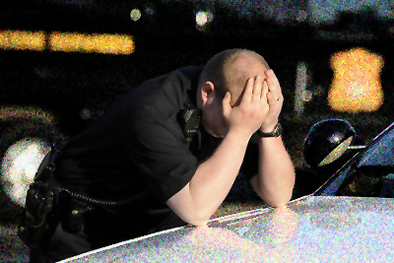 Is it possible for one man to punch another in the face without the capacity to understand the consequences? This was our theory and it made for a complicated legal battle. Is it possible for one man to punch another in the face without the capacity to understand the consequences? This was our theory and it made for a complicated legal battle. This case involves an all-too familiar scenario – the police are forced to handle a disturbed and out-of-control individual resulting in an injured officer. Drivers swerve around a young man walking around in a busy tunnel. Shirtless and covered in soot, the young man is in obvious need of help. A passing officer puts his lights on and parks in the travel lane, protecting the man from oncoming traffic. The officer tries to move the young man to safety. The young man refuses. Additional officers respond and after some cajoling, the young man briefly sits on the curb. Officer Sampson stands between the young man and passing vehicles. Suddenly, the young man jumps up and punches Officer Sampson in the mouth, splitting Officer Sampson’s upper lip. Knocked unconscious, Officer Sampson lands hard on the pavement. Officer Sampson awakes in a pool of his own blood. Nevertheless, Officer Sampson immediately joins the struggle to control the young man. Officer Sampson’s use of pepper spray ultimately forces the young man to relent. Officer Sampson recovered from his physical injuries and returned to duty. He was later honored by his department. The young man was found not criminally responsible for his assault on Officer Sampson due to a lack of mental capacity. It is clear PTSD affects first responders at a significant rate. Officer Sampson became increasingly fearful after learning a fellow officer and personal friend of his was violently injured in near identical circumstances nearly a year-to-the-day from his own attack. Officer Sampson showed classic signs of PTSD including recurrent nightmares and sudden mood changes like unexplained rage. The ensuing legal battle was complicated and centered around the question of whether an individual who was not criminally responsible for his actions owed any duty to the officer he attacked and whether he could be held civilly responsible. In addition, the insurance company that insured the young man initially refused to pay the claim, arguing that the young man intentionally injured the officer. Critical to this case was taking the young man’s father through a detailed deposition. The father testified that his son had gone off his medication three days prior to the attack. Arguing this case then became a delicate balance between showing two things: First, that the young man had sufficient understanding of his actions in negligently failing to take his medication; and second, that the young man negligently failed to use care in dealing with Officer Sampson, albeit without the capacity to understand the consequences of punching him. In the end, we were successful and recovered the maximum available insurance for Officer Sampson and his family, $300,000. It is an honor and privilege to represent those who protect and serve, and we have worked with officers over the years who have suffered PTSD. If you or anyone you know may be dealing with such symptoms, please seek support. There are many resources available. - Zachary M. Ballin, Esq.In order to protect the privacy of the injured officer and witnesses, all names have been changed. Any resemblance to names of real persons, past or present, is merely coincidental and not intended. The injured officer agreed to have this article published in order that police officers around the Commonwealth be better educated about PTSD and their legal rights to compensation when injured. 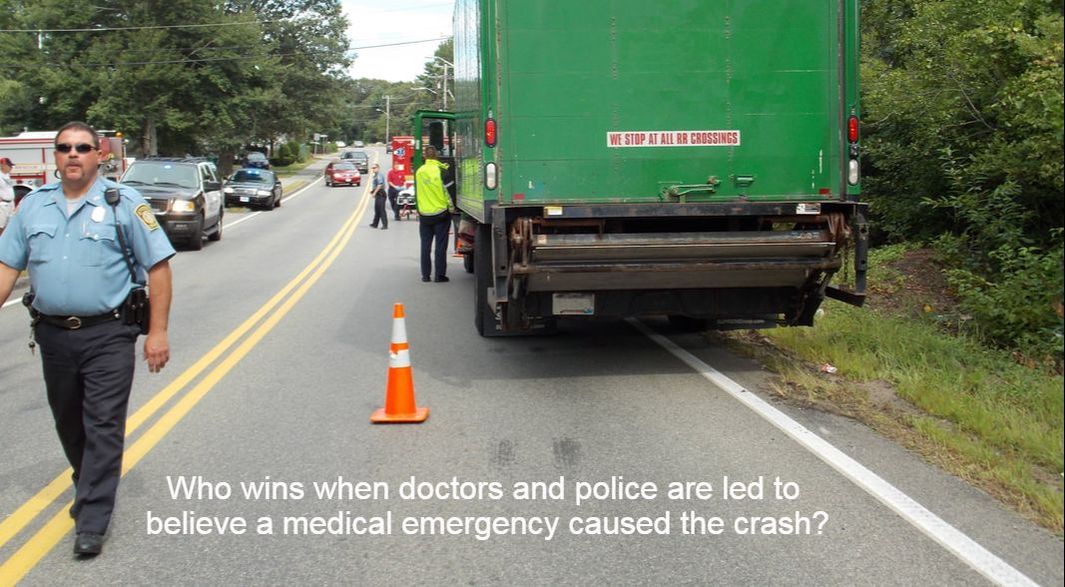 During the morning of August 23, 2013, a gas delivery driver for Acme Propane was driving a box truck loaded with propane cylinders. It was a dry, clear day. He drove past orange safety signs alerting him that he was approaching a work zone then drove over two orange cones. He drove off the road and smashed straight into the back of a parked vehicle within the work zone, totaling it. Initially, the police cited him for his negligence. Sitting inside that parked vehicle was Officer Rogers. The officer’s non-belted body was whipped backward and forward, causing nearly a year’s worth of disabling back pain requiring injections and intensive therapy to return him to duty. During that time, a defense was mounted by the truck driver and his employer, a national company, that wrenched layers of complication onto what first appeared to be a cut and dry case. After the crash, the truck driver was transported by ambulance to the hospital. In the ambulance and at the hospital, he reported he had an unexpected coughing fit, then passed out before the crash. If this was true, it would be a complete defense to any case against him and his employer under the sudden incapacitation doctrine, and Officer Rogers could not recover a penny. The hospital doctors diagnosed the truck driver with pneumonia causing vasovagal syncope, which confirms he coughed so hard he passed out. The truck driver’s doctor corroborated this diagnosis when he followed up. The medical report of these diagnoses was sent to the police department which had cited the truck driver. The department rescinded the citation. Undeterred, we sued the truck driver and the gas company. 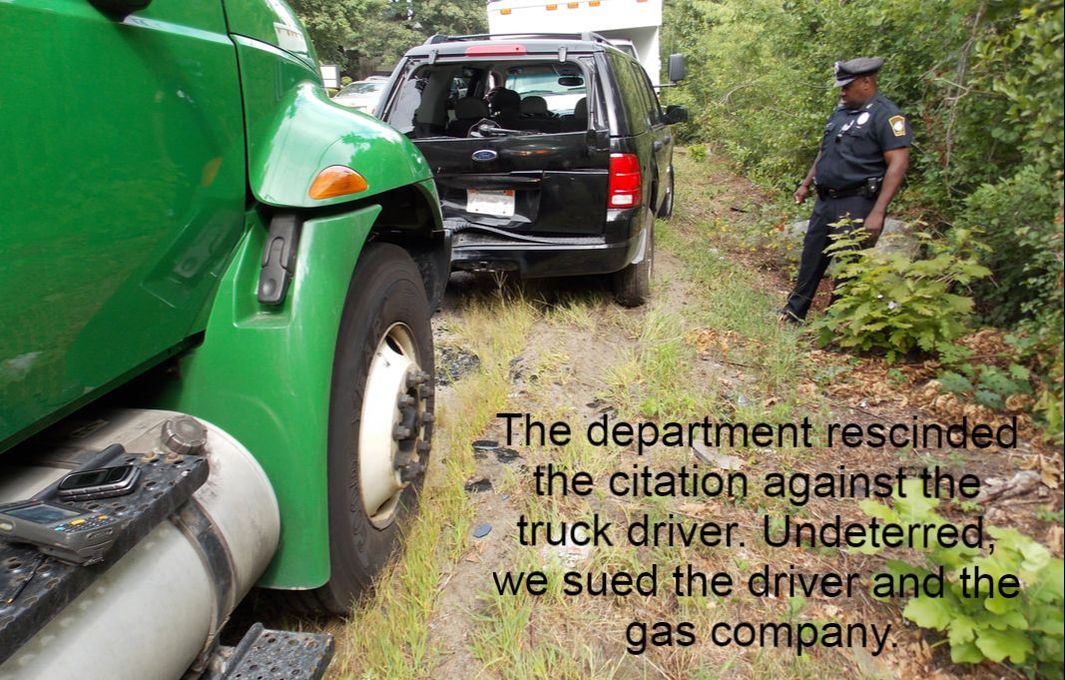 Discovery focused on proving the lie. Critical to this case, as with so many, were photographs taken at the scene by responding officers capturing small skid marks left just behind the rear tires of the gas truck. This raised the specter that the driver had attempted to stop just prior to striking Officer Roger’s car rather than being unconscious during the crash. However, the possibility remained that the marks were made by the immediate deceleration of the truck upon impact with a stopped car. Next, we confirmed with Officer Rogers and an auxiliary officer who was first on scene that the truck driver made no mention of losing consciousness prior to the crash. Further, the truck driver himself, after traversing a couple hundred feet while unconscious in a truck filled with gas cylinders, made no inquiry as to any harm he had done and expressed no concern. Finally, the geometry of the roadway proved crucial. Through several data points, we discredited the truck driver’s account of losing consciousness prior to impact. Since there was a left-hand bend in the road prior to the crash scene, and the truck made a flush impact with the back of the parked car, it was clear the gas truck navigated that left turn and then straightened out before impact. Had he passed out at some point during the turn, as he initially claimed, he would have ended up in the woods instead. This point proved sufficient to convince the parties involved that our case would ultimately prevail, regardless of what the truck driver claimed, and what the doctors believed. After lengthy litigation proceedings this case resolved at mediation for $300,000.00. This completely compensated Officer Rogers for every penny of overtime and detail pay he missed while he was out of work and more. It was a privilege working with Officer Rogers to reach a just result for his case. - Zachary M. Ballin, Esq. Congratulations to Attorney Zachary Ballin for being named a Super Lawyer’s Rising Star for 2017. It is an honor to be named among the Rising Stars which includes no more than 2.5% of the state’s attorneys. Here are some of Attorney Ballin’s recent results:
JURY VERDICT: $385,000 FOR WORKER’S BROKEN WRIST CAUSED BY CONTRACTOR’S DEFECTIVE EQUIPMENT5/11/2017
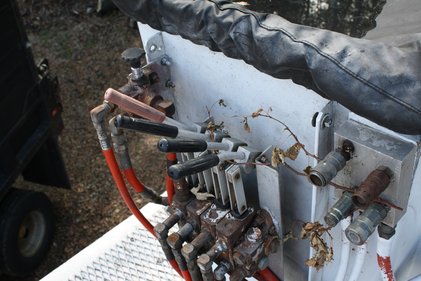 The on-board controls in the bucket truck’s “bucket”. The control guard is missing, leaving the controls and the worker’s hands exposed to falling debris. The on-board controls in the bucket truck’s “bucket”. The control guard is missing, leaving the controls and the worker’s hands exposed to falling debris. A contractor’s bucket truck is missing a piece of safety equipment – a fiberglass guard that keeps debris away from the hand controls in the bucket. Nevertheless, the contractor lends the bucket truck to a tree-cutting company. A lifetime arborist has a working interview with the tree cutting company, which requires him to use the bucket truck to prune trees. After a sixty-mile drive to the worksite, he points out the missing control guard. The worker is given an ultimatum: go up in the bucket truck or go home. Hoping to secure a full-time job so he can support his family, he grabs his chainsaw and gets in the bucket truck. While pruning a tree, a branch falls from a neighboring tree and lands on the controls. The bucket immediately starts to move and takes a path towards the tree he is working on. With his chainsaw in his right hand, the worker fights with his left to free the branch and regain control of the bucket. The bucket easily snaps through a branch and careens toward the trunk of the tree, smashing the worker’s left wrist in the process. Over the coming months, the worker required surgery to repair his wrist. The worker attempted a return to his trade, but he was unable to safely operate a chainsaw. He soon came to realize he could no longer work up in the trees. I filed a lawsuit on the worker’s behalf against the contractor. The contractor claimed the whereabouts of the bucket truck were unknown as it been sold about six months after the incident. The contractor also claimed to have no clue whether the control guard was missing or, for that matter, what a control guard even was. That said, the contractor blamed the tree-cutting company for using the bucket truck without the control guard in place. As for the worker, the contractor blamed him for the same reason. The contractor even went as far to say that the control guard would not have protected the worker anyway. Suffice it to say, the contractor was shocked to see photographs our private investigator took of the “missing” bucket truck, which the contractor sold six months after the incident. Sure enough, the control guard was still missing. Even worse, imagine the contractor’s shock when we discovered a letter it and the tree-cutting company signed ten days before this incident. This letter acknowledged, in part, that the control guard was missing. Undeterred, the contractor testified during the trial that it did not know the control guard was missing and that it never read the letter. As to the letter, the contractor claimed that it was actually written years after the incident and then back-dated. In the end, the jury saw the simple truth - the contractor knew its bucket truck was missing the control guard, but lent it out anyway to a company that lifts workers high in the air with chainsaws. After years of persistent, dogged litigation, the jury delivered the highest verdict Bristol County has seen for a non-death case in years: $385,000 including $10,000 for the worker’s wife’s loss of consortium claim. - Zachary M. Ballin, Esq. Our lives are changing and becoming ever more interconnected through the now ever-present camera. Yet the basic fundamentals and needs of our everyday lives are unchanged. While safety and protection will never cease to top the list of our necessities, there are those who wish to sensationalize any individual incident involving an officer into an indictment of all those who surround us in every minute of our lives ready to lay down the ultimate sacrifice to save someone else. Blue lives do matter if you value your own.
At Ballin & Associates it is our privilege to work day in and day out to represent the rights of those who protect and serve. We wish now to highlight the heroic acts common to their profession, but all too often glossed over or ignored by the press. On March 12, 2016, after a long night of drinking heavily, Erik McBeth gets into his car and onto the LeeRoy Selmon Expressway in Tampa, Florida. Erik McBeth is driving on the wrong side of the road. While most of Tampa’s residents are sound asleep at home, Hillsboro County Deputy John Kotfila patrols the Selmon Expressway. Deputy Kotfila sees an SUV barreling towards a car directly in front of his cruiser. There are no guidelines for this situation. There is no training. There is only the character of the person behind the badge. Sarah Geren is driving the car in front of Deputy Kotfila. Her boyfriend is in the front passenger seat. She desperately flashes her lights at the SUV. Then, at the last moment a cruiser speeds in front of her. The cruiser swerves into the deadly path of the SUV, crashes into it, knocks it aside, and saves Sarah Geren’s life. Deputy Kotfila, a third generation police officer and a Falmouth, Massachusetts native, will forever be remembered for this incredible, selfless act. What causes a person, born like any of the rest of us, to grow up and one day act at a moment’s notice to take the place of a stranger knowing it means certain death? Please take a moment to reflect on what it means to wear a badge. We are grateful for all those who do. *This article is the first installment in our Mass Heroes series. Nominations for Mass Heroes can be submitted via email byclicking here. – Zachary M. Ballin, Esq. Congratulations to Ballin Law’s Zachary M. Ballin, Esq. who has been named the Norfolk County Director for theMassachusetts Bar Association’s Young Lawyers Division Board of Directors. The Young Lawyers Division’s mission is providing the necessary tools new practitioners need to excel, as well as providing opportunities for civic outreach, pro bono representation and networking with peers.
Attorney Zachary Ballin is entering his fifth year with Ballin Law. He represents people in Massachusetts and Rhode Island who have been injured by the unsafe choices that others make. Someone rear-ends you. Now what? You spend the next couple of months getting your neck and back taken care of by a couple different physicians. Along the way you do not consider making a claim against The Other Guy’s Insurance Company, Inc. or calling a lawyer. After all, you ‘don’t want to hurt the other driver, it wasn’t intentional’. Or maybe you are just ‘not the type of person to make an insurance claim’. But did you know that whether you make a claim or not, The Other Guy’s Insurance Company surcharges the other driver? And what’s more is that they set aside money for future payment to you for a claim they assume you will make. This is called setting a “reserve”. You see, The Other Guy’s Insurance Company knows that it may owe you money. So, they estimate a dollar amount equal to your harms and losses and they set that money aside for you. If you make a successful claim, they give it to you. If you do not make a claim, they give it to themselves and consider it profit.
We represent people harmed from all sorts of incidents: car crashes, house fires, defective products… the list goes on. One thing that never changes, though, is that these people are worse off after their incident than they were before. The idea behind an insurance company setting reserves and paying money for claims is to help get injured people back to where they were before their incidents. There is nothing wrong with claiming money from a fund of money that an insurance company has reserved for you. That is the reason why insurance companies pool our premium dollars into one, giant fund: To make you whole again. – Zachary M. Ballin, Esq. Thirteen years after the September 11th terrorist attacks in New York City, thousands of first responders continue to struggle with health problems, some which are just being diagnosed. Respiratory illnesses like asthma and sinusitis are common among those who participated in the World Trade Center recovery efforts. And studies show that the incidence of cancers for 9/11 first responders are 15 percent higher than the general population. Thyroid cancer was 239 percent higher. (Read the full story).
This year’s anniversary of 9/11 comes at a time of heightened violence in the Middle East alongside the ever-growing threat of a new terrorist regime. While our thoughts are with those fighting abroad, they are also with our first responders and their families who are still suffering from the attacks thirteen years later. Over decades of representing our police officers and fire fighters who have been injured while on duty protecting us, we have seen how injuries that are sustained in an instant can last a lifetime. Please take a moment with us this 9/11 to recall the efforts of all the first responders to this terrorist attack and consider doing what you can to help those of them still suffering the consequences of their heroism. Click here to learn about the FeelGood Foundation and to make a donation. - Zachary M. Ballin, Esq. |
ARCHIVES
October 2018
CATEGORIES
All
|
